Superfood Pre-Workout | Vegan Nutrition
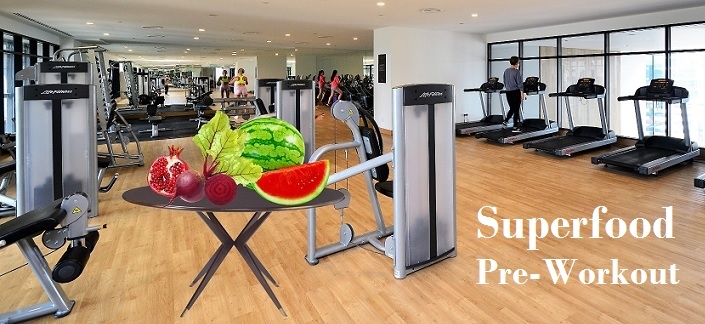
How super do you have to be to be a superfood? Given that so few foods actually make the cut, its seems that the criteria are stringent indeed.
Even though the superfood term isn't actually a true health sciences definition, it does help to convey the therapeutic power of the food in question.
Because foods don't just nourish in the short-term, they can do some pretty amazing things, like help to prevent chronic disease as we age.
So it would seem that superfoods do actually have to be quite amazing in order to be termed as such.
For instance, most of them are unlikely to be allergenic and offer a broad range of nutrients, many of which are at high concentrations. These nutrients tend to be as some combination of vitamins, minerals and/or phytochemicals.
Quite often these foods are backed by scientific research as well as historical evidence indicating that they offer significant health benefits, or at the very least modulate biomarkers of health for the better.
One thing a superfood can't do, unfortunately, is deliver the natural therapeutic power to reverse the harmful effects of a diet and lifestyle that are primarily 'unhealthy'.
As our health is the sum of many factors, including environment, sleeping habits, exercise, stress management and much more. And as we all know, the quality of our diet is a major player.
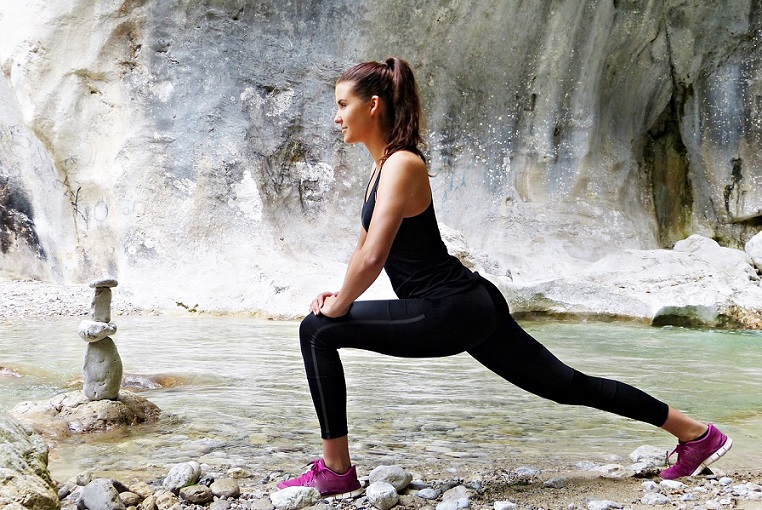
Before you start enjoying a superfood regularly, watch out, because it’s easy destroy the benefits of some superfoods. For instance, a couple of squares of organic fair-trade dark chocolate after dinner can easily turn into a few rows of milk chocolate, containing plenty of refined sugar and not much cocoa or cacao.
What is a Superfood?
Although there is no standard definition for a superfood—it’s more of a food promotional term—there is certainly some truth to the nutritional concept.
Superfoods are tend to be low-calorie foods that contain an abundance of vitamins, minerals and/or antioxidant-rich phytochemicals.
As we’ve seen, it’s easy to turn a superfood into something considerably less than super—which would be like converting Captain American back into Steve Rogers.
To experience the benefits of a superfood, it’s important to first find the best form of that food to consume on a regular basis.
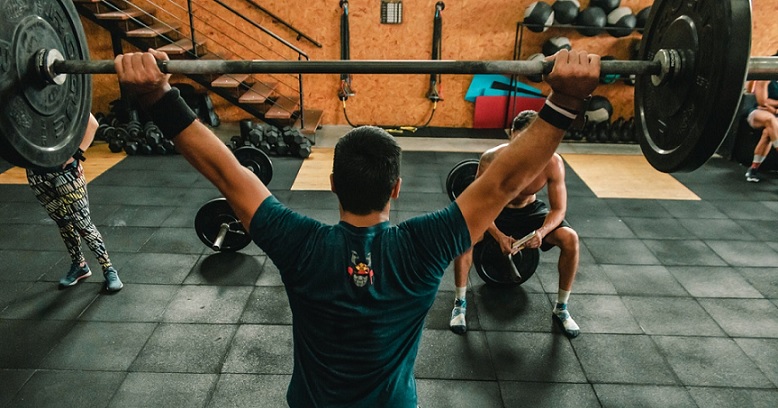
For instance, most nuts and seeds offer a tremendous amount of minerals, such as zinc and selenium, and beneficial oils as well. However, munching your way through a bag of roasted salted nuts after dinner is definitely not a longevity-promoting habit.
A dietary excess of sodium is a powerful way to reduce life-expectancy. And roasting a nut oxidises much of the unsaturated fats 1. This leads to an increased free-radical burden, the opposite of what we are trying to achieve with a superfood.
Fortunately, some superfoods are as incorruptible as Mary Poppins, such as kale, green tea and turmeric. Organic fresh produce is certainly the highest nutritional ideal, though any fresh produce is a great deal better than none at all.
Let’s take a look at how to create a fresh superfood pre-workout at home using some common fruit and vegetable juices, and how it might just crank up nitric oxide production quite nicely.
Superfood Pre-Workout
When it comes to pre-workouts, there’s more than one way to skin a potato. Every formulation is different. While some target nitric oxide, others focus on different biochemical pathways to enhance performance.

And depending on the type of training you do and the time of day you exercise, you have different needs from a pre-workout.
Though regular container-bought pre-workout can be a great way to go, it can be fun to experiment with your own creations at home, especially when they’re superfood-based and health-promoting.
And what better way to DIY your own pre-workout than from the local fruit and veg store!
If you’re even remotely interested in health or sports nutrition, you’re probably well aware of a colourless gas called nitric oxide.
Nitric Oxide, or NO, is produced in the endothelium of the blood vessels by an enzyme called endothelial nitric oxide synthase (eNOS). One important role of Nitric Oxide is to encourage the smooth muscles of the blood vessels to dilate.
This means NO improves circulation to the peripheries, including skeletal muscle tissue. It has been theorized for a long time that enhancing nitric oxide synthesis improves exercise performance by increasing oxygen and nutrient supply to working muscles.
And year after year, it’s becoming increasingly evident that this may well be the case.
Many weightlifters and bodybuilders also find that the improved blood flow from a nice Nitric Oxide boost enhances the coveted muscle pump during and after exercise.

Many superfoods have beneficial effects on the nitric oxide pathway, supporting it in a number of different ways. The basic building blocks, which are arginine, citrulline, nitrate or nitrite, are found in a range of foods.
Folate is needed for the final stage of nitric oxide synthesis, supporting the eNOS enzyme as a cofactor. While Vitamin C is also important, assisting with the conversion of nitrates to nitric oxide.
This can be compared to delivering bricks to a brick layer (citrulline and nitrate) and giving the brick layer some strong coffee to improve their work rate (cofactors like folate and vitamin C).
A classic and well publicized superfood that supports nitric oxide synthesis is beetroot, as it contains high levels of nitrates 2. And Nitrates are converted to nitric oxide, with the help of vitamin C.
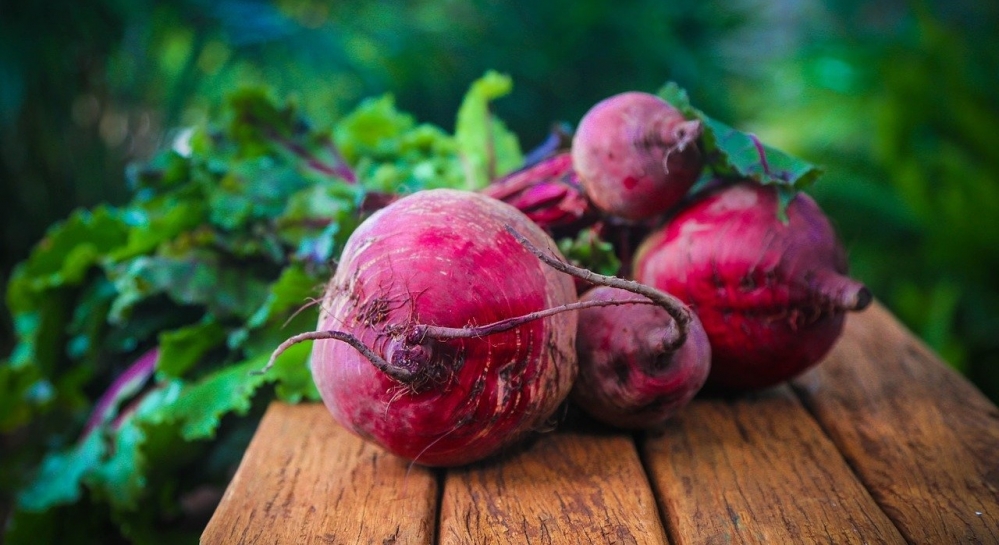
And it just so happens that Guava is a particularly rich source of vitamin C, which makes it a great partner in crime for beetroot as a superfood pre-workout ingredient.
Pomegranate has demonstrated the ability to prolong the effects of nitric oxide, and is a decent source of an important B vitamin called folate. Beetroot, is however, very rich in Folate, supporting the conversion of arginine to nitric oxide 3.
That’s a pretty solid start already for supporting the nitric oxide pathway. We’ve got some cofactors, an NO half-life booster and a solid starting molecule called nitrate.
So why not also support the nitric oxide pathway with another type of precursor molecule called citrulline, the best dietary source of which is watermelon. Citrulline is a great way to elevate blood arginine levels, perhaps more effective than arginine itself.
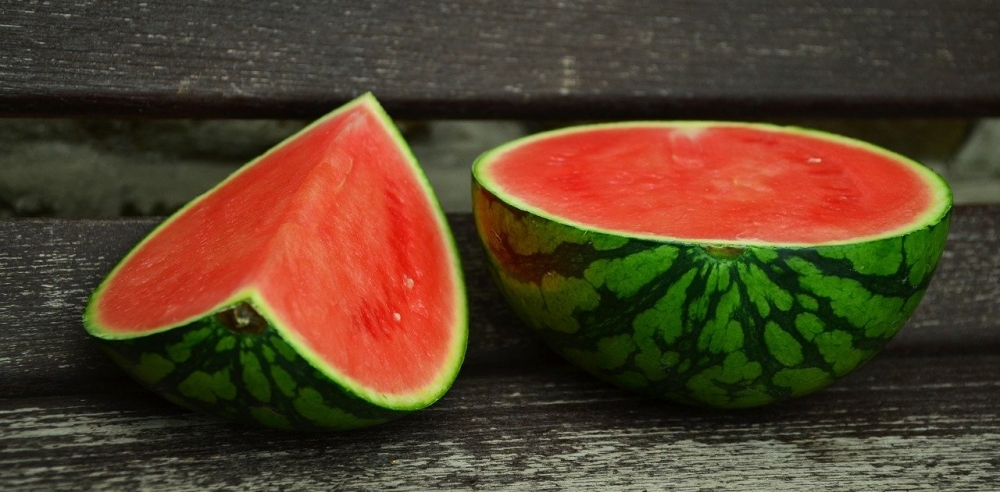
Each 710ml quantity of watermelon juice contains approximately 1 gram of citrulline 4,5. To put this into perspective, a therapeutic dosage of Citrulline Malate 2:1 starts at 6 grams.
This means you would have to be chugging down litres of watermelon juice just to get a therapeutic dosage, which is simply not practical.
Bearing in mind, a 2:1 powder of citrulline and malate is actually composed of 72.3% citrulline by weight, the rest of which is malic acid. So, 6 grams of a 2:1 powder contains roughly 4.34 grams of pure citrulline.
However, even 4.34 grams of citrulline from watermelon juice just isn’t attainable, unless you’re using a powdered concentrate that you’re then diluting.
For the purposes of this experiment, this is the best we can do. You can include some arginine sources in your diet throughout the day to ensure you have plenty of precursor to go around come workout time. Rich sources of arginine are pumpkin seeds, chickpeas and peanuts.
The beauty of using whole foods like watermelon, however, is that they contain thousands of interesting phytochemicals that offer a broad range of benefits, well beyond that of any single amino acid.
So bottoms up?
If you want to introduce some malic acid into your superfood pre-workout, this organic acid naturally occurs in a range of foods, such as grapes and apricots.
The combination of watermelon, pomegranate, guava and beetroot creates a synergistic superfood pre-workout worth some experimentation.
Do we have peer-reviewed published research on this natural superfood pre-workout indicating how it impacts a range of performance, recovery and biochemical parameters over a number of years?
Nope.
But neither do most pre-workouts containing long-lists of ingredients. Sometimes one or two ingredients may have a solid evidence backing, if the dosage is right, but not usually entire formulations—and not the product as a whole.
This is the difference between evidence-based and a theoretical approach based on scientific research (pre-clinical and small clinical trials).
This Superfood Pre-Workout is definitely a theoretical approach to natural performance enhancement—not to be taken too seriously.
Experiment, see how you feel and have some fun. This is about as good as it gets for a DIY drink.
Check out this diagram below to see how each of these the four superfoods may support the nitric oxide pathway.
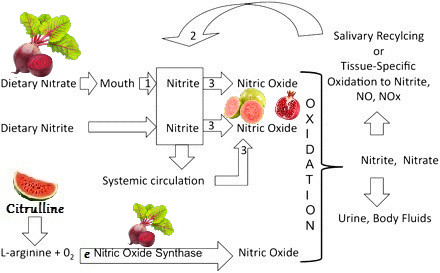
Now the trick is getting these superfoods in before a workout, so that when we’re in the gym we’re ready to roll and punch out some reps.
Superfood Pre-Workout Recipe
- 250ml Watermelon Juice
- 100ml Beetroot Juice
- 100ml Pomegranate Juice
- 50ml Guava Juice

Start sipping on this juice about 30 minutes before you hit the gym, track or field and try to finish it 15 minutes before starting. Or, if you like to skull, just down it 15 minute beforehand.
This short period of time between finishing the drink and beginning your exercise session allows the nitrates, citrulline, cofactors and phytochemicals to find their way into your blood stream and start to exert a biological effect 6.
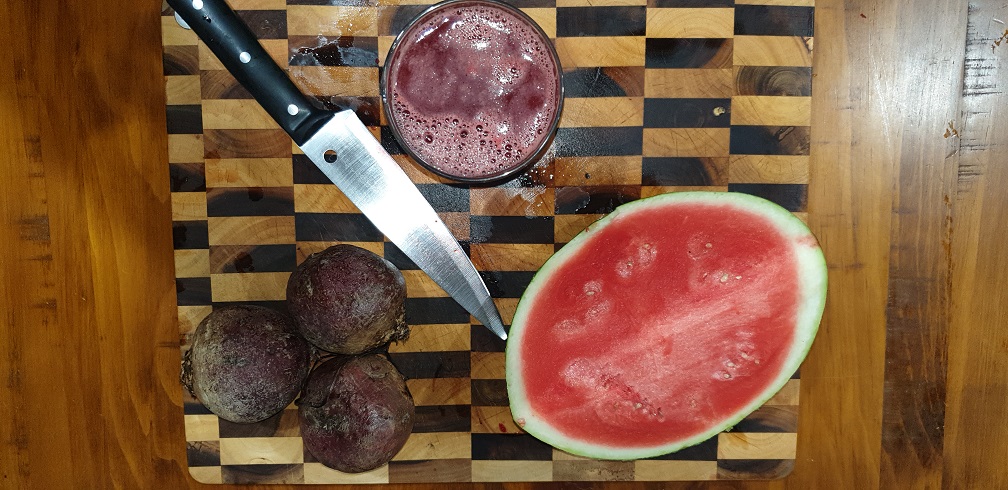
Organic Pomegranate Juice (not from Concentrate) is readily available in glass bottles at one of the major supermarkets. Quality guava juice may be more difficult to source, though fresh Guava is available, as is UHT juice and powdered extracts.
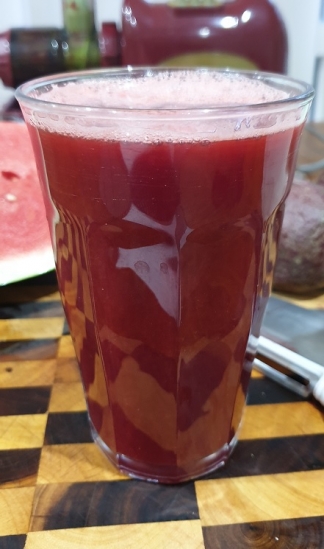
If you have a juice extractor, beetroot juice is simple enough to create, though you might want to do a batch and freeze small portions. Silicone ice-cube trays can be helpful here (and non-toxic too).
You can simply eat the watermelon with your beetroot, pomegranate and guava juices. Though juice extraction (cold-processed using low RPMs) makes for a pretty refreshing drink.
It’s worth pointing out that juice extraction has its down-sides, more so when it comes to moderate and high carbohydrate content fresh produce, like carrots and apples. This is due to the negative glycemic impact they create.
As a general rule, it’s always better to consume the whole food, or blend it all up to drink, fibre and all.
However, if ever your body was ready for a glycemic hit it’s immediately before, during or after exercise. This is because working muscles have plenty of GLUT-4 translocated to muscle cell membranes, ready to uptake glucose from the blood.
Thus the glycemic impact is somewhat relieved. However, if your goal is fat-loss, then ingesting any carbohydrates during exercise may interfere with your body’s ability to burn fat. Though if your goal is strength, power and muscle size—go for it.
Superfood Pre-Workout Nutrition Panel (Approximate)
|
Watermelon Juice 250ml (from 270g fruit)(USDA) |
Pomegranate Juice 100ml (branded [macros] + USDA [micros]) |
Beetroot Juice (100ml Juice made from 170g peeled) |
Guava 50ml (from 60g fruit) |
TOTAL (for a 500ml Drink) |
|
|
Energy (kcal) |
81 |
59.0 |
39.0 |
37.7 |
216.7 |
|
Protein (g) |
1.65 |
0.15 |
1.08 |
0.0 |
2.88 |
|
Fat, Total (g) |
0.41 |
0.29 |
0.11 |
0.0 |
0.81 |
|
- Saturated (g) |
0.04 |
0.077g |
0.017 |
0 |
0.13 |
|
Carbohydrates, Total (g) |
20.39 |
14.5 |
7.0 |
9.2 |
51.09 |
|
- Sugars (g) |
16.74 |
13.5 |
4.82 |
7.9 |
42.96 |
|
Fibre (g) |
1.08 |
0.1 |
2.0 |
0.6 |
3.78 |
|
Potassium (mg) |
302.4 |
214 |
209 |
23.4 |
748.8 |
|
Sodium (mg) |
2.7 |
9.0 |
81.0 |
3.6 |
96.3 |
|
Vitamin C (mg) |
21.87 |
0.1 |
3.6 |
137mg |
162.57 |
|
Lycopene (mcg) |
12,236.4 |
0 |
N/A |
N/A |
12,236.4 |
|
Beta Carotene (mcg) |
818.1 |
0 |
N/A |
N/A |
818.1 |
|
Folate (mcg) |
8.1 |
24.0 |
185.3mcg |
29.4mcg |
246.8 |
Natural Agmatine Sources
If you’ve ever wondered if there are any solid decent sources of agmatine, then you’re in luck. Research indicates the top two foods are Sake and Fermented Soybean Paste.
Though Sake is not a good idea before exercise, for obvious reasons, fermented soybeans could certainly elevate our blood agmatine level and activate the eNOS enzyme even further.
However, fermented soybean paste may not sit too well in the stomach during exercise. You may like to introduce this food product into your diet though, to keep your agmatine levels topped up during the day.
For further information on this fermented food, check out this reference.
Organic Energy Enhancers
If you want to bump up your energy level before exercise, to get you ready for a solid session, sometimes a little bit of natural stimulation can go a long way.

Some of the best natural sources of caffeine are Guarana, Camellia sinensis, Cacao, Yerba Mate, Kola Nut and a bean that is still raging in popularity around the globe: Coffee.
If you are particularly sensitive to the effects of caffeine, but still think you could do with a pre-workout boost, you might simply like to try a quality organic Green Tea (Camellia sinensis).
This miraculous plant contains a moderate level of caffeine and also an amino acid called L-Theanine, the latter of which may assist in reducing potential side-effects of the former.
If you’re not particularly sensitive to caffeine, some experimentation could be a good idea to see what you respond to. After all, we’re all different.
You might like to mix some Kola Nut, Green Tea, Yerba Mate or Cocoa powder into your Pre-Workout Superfood drink. Though Guarana is potent, it isn’t the most pleasant tasting powder. Unless you’ve got a palate made of steel you might have some trouble chugging it down.
Alternatively, if you really like a pre-workout kick espresso shots work quite nicely. As far as each of these plants meeting the criteria for a superfood, certainly Cacao, Green Tea and Coffee are polyphenol-rich powerhouses.
What Else is in a Pre-Workout?
L-Tyrosine is a popular pre-workout ingredient as well. This conditionally-essential amino acid wears many biochemical hats in the human body.
Because this amino acid is technically non-essential in medical nutrition terminology, this means it can be synthesized by the human body, which it is, from the essential amino acid Phenylalanine.
The best superfood source of Tyrosine is pepitas or pumpkin seeds, containing just over one per cent by weight. Pepitas also contain an abundance of minerals, especially iron, zinc and manganese.
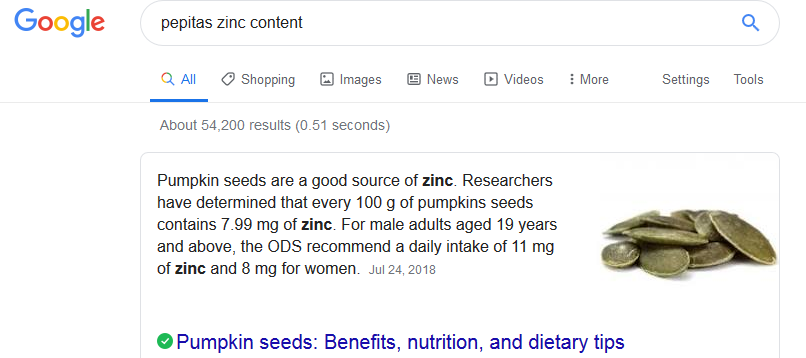
Just watch out for the energy values on this one, as it is also a concentrated source of monounsaturated (16g/100g), polyunsaturated (20g/100g) and saturated fats (9g/100g).
Ideally, munch on a small palm full as part of a meal, regardless of training time, in order to keep your Tyrosine and mineral status topped up.
Other amino acids (Beta-Alanine), dipeptides (Creatine) and tripeptides (L-Carnitine) are harder to come across in the plant world, with meat and fish the only dietary sources.
Fortunately, these ergogenic ingredients can be obtained in pure powder form by the process of bacterial fermentation, making them vegan friendly. If you want to give these a go, simply stir them into your superfood pre-workout drink.
Final Thoughts
Creating your own superfood pre-workout can be quite a fun way—it’s not lame to use the word fun, is it?—to learn about nutrition and enjoy some experimentation.
In terms of precautions and side-effects, these are quite seldom, unless you have particular food intolerance, allergies or sensitivities to a given food. If you are prone to low blood pressure, taking a nitric oxide boosting formula could potentially lower it further, if that formula is used daily and for months.
Additionally, all of the aforementioned caffeine containing plants have the same precautions and potential side-effects of any caffeine source. So check with your healthcare practitioner if you are unsure or your caffeine sensitivity.
Looking beyond the simplistic single-nutrient breakdowns that have been provided in order to view a whole food, each of the recommended foods contains literally thousands of nutrients, and in Traditional Chinese Medicine and Ayurvedic Medicine, they also contain Chi (or Qi) and Bala, respectively.
Westerners tend to refer to Chi and Bala as energy, delivered by the life-force of the plant, with the ability to promote vitality and enhance our mood and physical and mental energy level.
Enjoy the process!
References
- Cook NR et al. Sodium Intake and All-Cause Mortality over 20 Years in the Trials of Hypertension Prevention. J Am Coll Cardiol 2016 Vol 68;15 p.1609-1617
- Hord NG et al. Food sources of nitrates and nitrites: the physiologic context for potential health benefits. The American Journal of Clinical Nutrition 2009 Vol 90;1 p.1-10
- Stanhewicz AE and Kenney WL. Role of folic acid in nitric oxide bioavailability and vascular endothelial function. Nutrition Reviews 2017 Vol 75;1 p.61-70
- Cutrufello PT et al. The effect of L-citrulline and watermelon juice supplementation on anaerobic and aerobic exercise performance. J Sports Sci 2015 Vol 33;14 p.1459-1466
- Bailey SJ et al. Two weeks of watermelon juice supplementation improves nitric oxide bioavailability but not endurance exercise performance in humans. Nitric Oxide Vol 59 p.10-20
- Ma L et al. Nitrate and Nitrite in Health and Disease. Aging and Disease 2018 Vol 9;5 p.938-945








